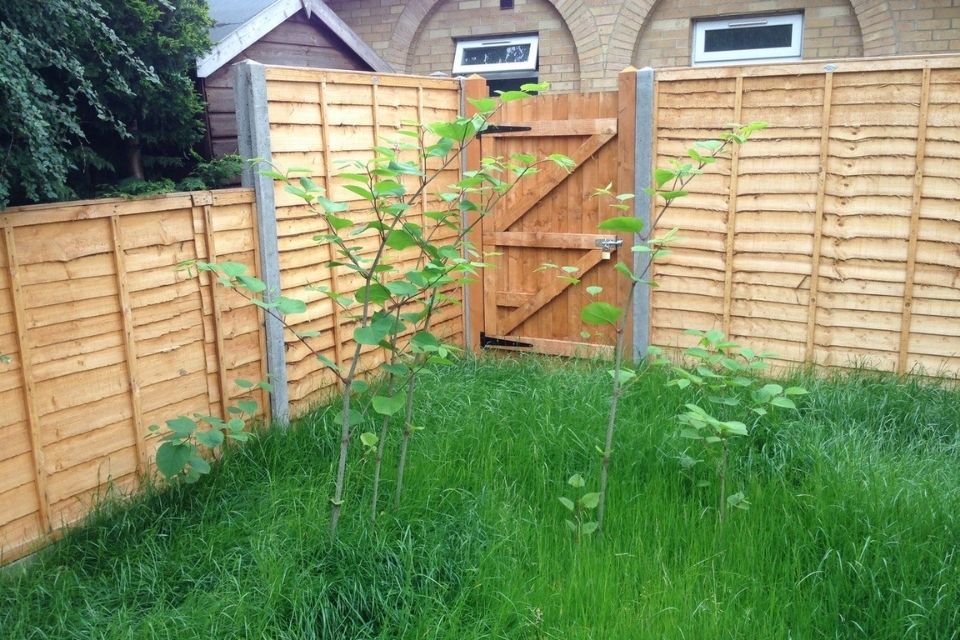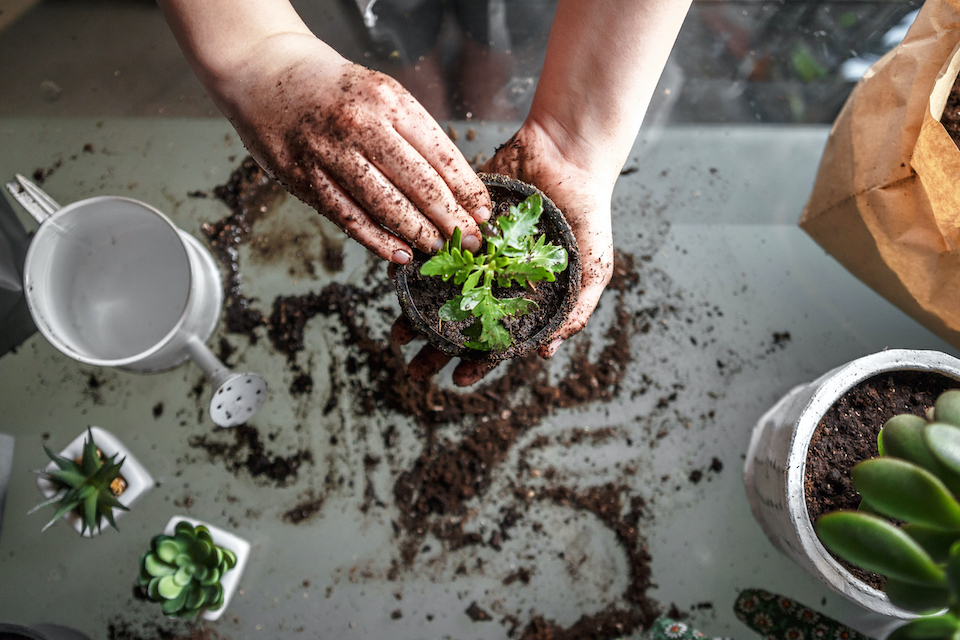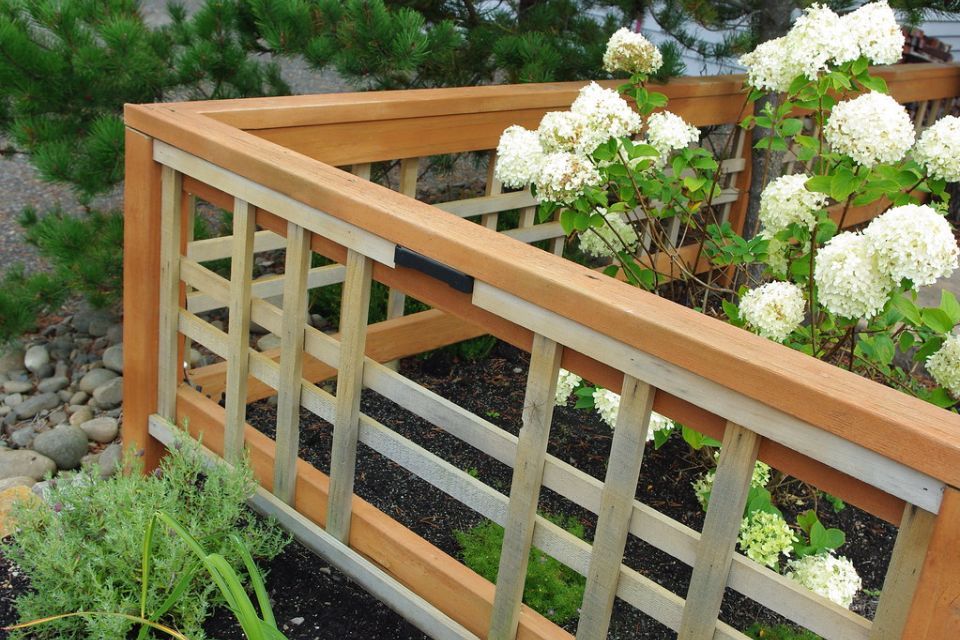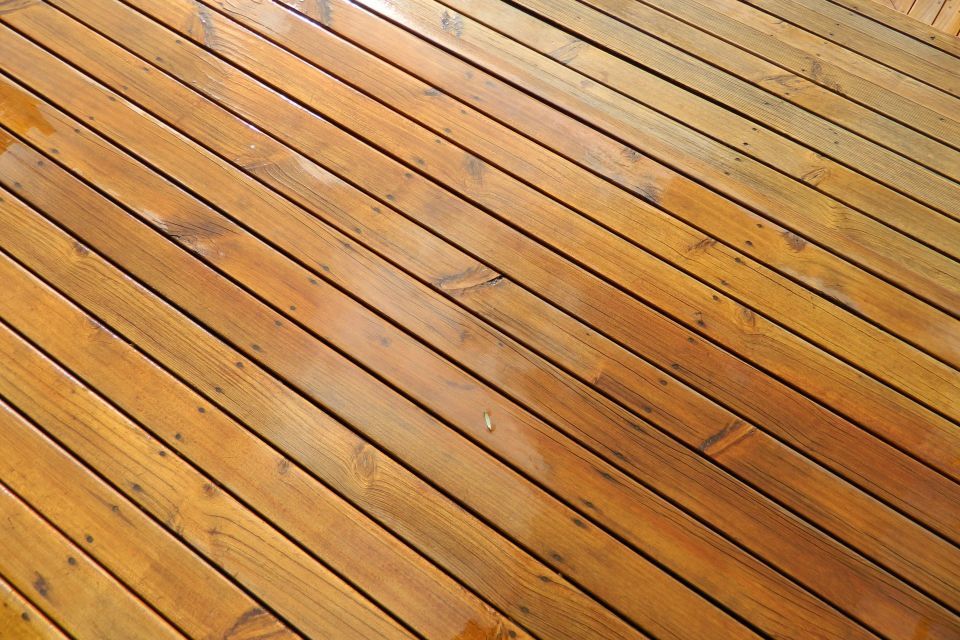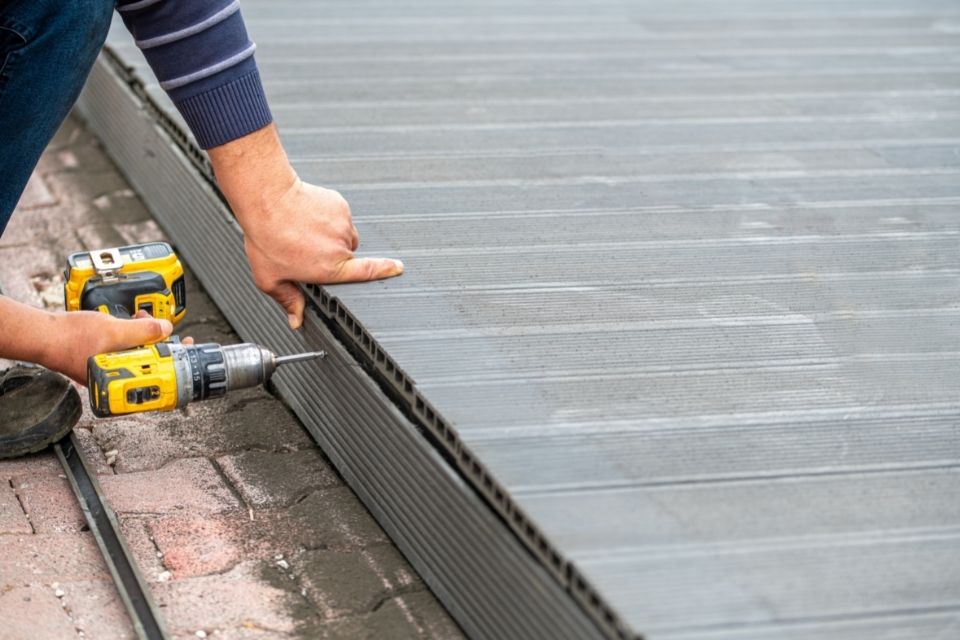How Much Does It Cost to Remove Japanese Knotweed?
Why is Japanese knotweed such an issue?
Due to its bad reputation, mortgage companies often refuse to lend if Japanese knotweed is an issue on site unless an insurance-backed guarantee and management plan have been established.
However, there is evidence that Japanese knotweed is not as big an issue as once thought.
That said, it's still a problem that should be dealt with by professionals.
If left untreated, Japanese knotweed can cause structural damage to a property.
So, how much should you expect Japanese knotweed removal to cost in 2025?
Let's dive in below.
Cost to Remove Japanese Knotweed in a Domestic Area
The average cost of removing a knotweed infestation for a domestic area would be:
| Size of Area | Cost |
|---|---|
| 20m² or less | £500 to £2,000 |
| 20-50m² | £2,000 to £3,000 |
| 50-100m² | £3,000 to £5,000 |
The price for a Japanese knotweed removal will depend mostly on the size of the area and the removal method used.
Cost to Remove Japanese Knotweed on a Commercial Site
As for a commercial site area, a herbicide treatment over five years may cost:
| Area Size | Average Cost |
|---|---|
| 50m² or less | £1,000 to £3,000 |
| 50-100m² | £3,000 to £5,000 |
| 100-500m² | £4,000 to £6,500 |
| 500-1000m² | £5,000 to £10,000 |
Cost to Reduce Dig & Root Barriers With Herbicide Treatment
When it comes to the approach of reducing dig & root barriers with herbicide treatments, it will cost:
| Area Size | Average Cost |
|---|---|
| 50m² or less | £2,000 to £5,000 |
| 50-100m² | £5,000 to £10,000 |
| 100-500m² | £15,000 to £40,000 |
| 500-1000m² | £40,000+ |
Cost of Onsite Relocation & Herbicide Treatment
For onsite relocation and herbicide, expect to pay:
| Area Size | Average Cost |
|---|---|
| 50m² or less | £5,000 to £10,000 |
| 50-100m² | £11,000 to £20,000 |
| 100-500m² | £12,500 to £20,000 |
| 500-1000m² | £18,000 to £30,000 |
Cost of Japanese Knotweed Excavation & Disposl
For a full excavation and disposal, also known as a dig and dump, costs land around:
| Area Size | Average Cost |
|---|---|
| 50m² or less | £5,000 to £20,000 |
| 50-100m² | £14,000 to £39,000 |
| 100-500m² | £35,000 to £120,000 |
| 500-1000m² | £100,000 to £200,000 |
- How Much Does It Cost to Remove Japanese Knotweed?
- What are the Supply Costs of a Japanese Knotweed Removal?
- What Factors Impact Japanese Knotweed Removal Costs?
- Labour Cost to Remove Japanese Knotweed
- How Long Does It Take to Remove Japanese Knotweed?
- How Can I Tell If I Have a Japanese Knotweed Problem?
- Types of Japanese Knotweed Treatments
- FAQs
What are the Supply Costs of a Japanese Knotweed Removal?
The supply costs of removing Japanese Knotweed typically account for the largest portion of the overall expense. These costs can vary depending on the method of removal and the extent of the infestation.
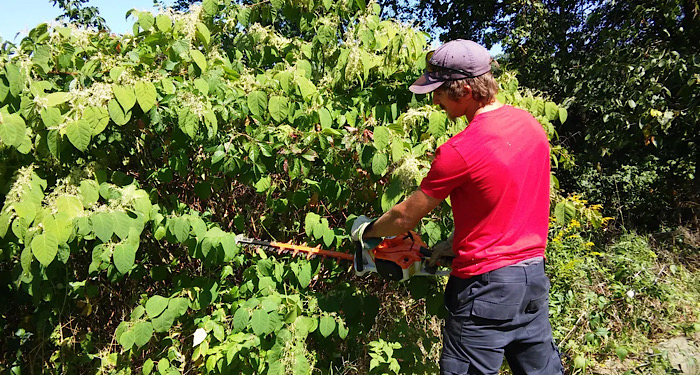
Here’s a breakdown of common supply costs associated with Japanese Knotweed removal:
- Herbicides: Professional-grade herbicides, such as glyphosate-based treatments, can cost between £20 to £100 per application, depending on the size of the affected area and concentration required.
- Protective Gear: Safety equipment such as gloves, goggles, and protective clothing may be necessary, costing around £50 to £150.
- Tools and Equipment: Tools like sprayers, cutting tools, or even digging equipment may be needed. Hiring or buying these can range from £50 to over £500, especially if excavation machinery is involved.
- Disposal Costs: Knotweed waste is classified as controlled waste in the UK, and must be disposed of at licensed landfill sites. Transport and disposal fees can add hundreds of pounds to the final bill.
- Root Barrier Membranes: If root containment is necessary, specialist membranes may be required to prevent regrowth, costing between £5 to £20 per square metre.
Overall, supply costs for Japanese Knotweed removal can range from a few hundred to several thousand pounds, depending on whether you choose a chemical, mechanical, or integrated removal approach.
Let's break down how much the supply costs would be for different types of treatments/approaches.
Supply Japanese Knotweed Removal Cost
| Removal Type | 50m² or less | 50-100m² | 100-500m² | 500-1000m² |
|---|---|---|---|---|
| Herbicide treatment Over Five Years | £910 to £2750 | £2820 to £4550 | £3730 to £5800 | £4640 to £9100 |
| Reduce Dig & Root Barriers with Herbicide Treatments | £1910 to £4750 | £4820 to £9550 | £14,730 to £39,300 | £39,100+ |
| Pick and Sort/Screening | £1910 to £4750 | £4820 to £9550 | £14,730 to £39,300 | £39,100+ |
| Onsite Relocation and Herbicide | £4910 to £9750 | £10,820 to £19,550 | £11,140 to £19,300 | £17,640 to £29,100 |
| Burial on Site | £4910 to £14,300 | £9820 to £19,550 | £18,230 to £34,300 | £29,640 to £74,100 |
| Full Excavation and Disposal (Dig and Dump) | £4100 to £19,750 | £13,820 to £38,550 | £34,730 to £119,300 | £99,640 to £199,100 |
What Factors Impact Japanese Knotweed Removal Costs?
Japanese knotweed removal costs depend on a number of factors, including the type of treatment, the nature of the treatment area, ease of access, the number of tradespeople hired, the materials used for the treatment, and the location of your property.
Let's take a closer look at some of these factors.
Minimum Fee
In many cases, tradespeople will charge a minimum fee, either as a cost added to your overall bill or one that is incorporated into your bill. For instance, if you face a daily labour charge, then whether the work lasts four hours or seven hours, you'd pay for one day of labour.
Treatment Area/Type
The type of treatment used will impact the cost of the work, as will the treatment area. For instance, herbicide is a cheaper option than more disruptive options such as full excavation and disposal. The easier a treatment area is to work with, the shorter the work will be, and the less it should cost overall.
Number of Weeds
With more weeds, the more extensive the work will be to remove the Japanese knotweeds successfully. As a result, the job will take longer, and you can expect a higher cost overall.
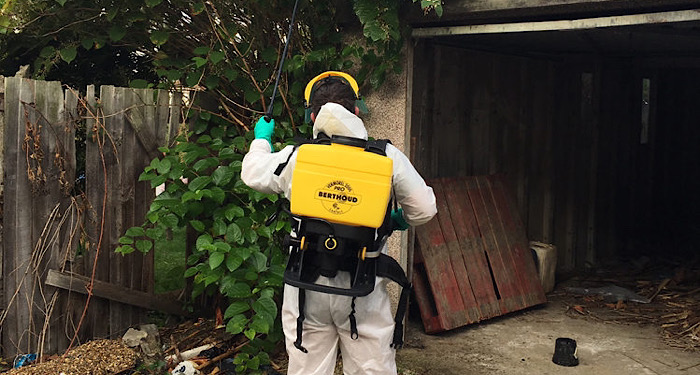
Size of Area
As shown in the opening section, the larger the area, the more Japanese knotweed removal will cost. For a small 50m² area, the removal may cost 10% or less than removing Japanese knotweed from a much larger 100m² area.
Materials
Both the type and quality of materials for treating Japanese Knotweed can influence not only the price but also the effectiveness and longevity of the treatment. Investing in higher-quality materials can help ensure a more thorough and compliant removal process, ultimately reducing the risk of regrowth and long-term costs.
Materials such as herbicides, root barrier membranes, containment bags and liners and soil treatment additives may be used, adding to the material costs.
Number of Tradespeople
In most cases, one specialist is hired to deal with Japanese knotweed removal. However, for larger projects, two or several tradespeople will be needed. The more people you hire, the higher your labour expenses will be.
Of course, with more people on the job, the quicker it will take. For this reason, whether the number of tradespeople will impact the cost overall by increasing it or decreasing it will depend on how well the tradespeople work together.
Duration
The longer the work takes, the more the labour cost will be. Considering that the supply costs are the most significant factor in the price in most cases, the duration is still not a massive cost factor.
Labour Cost to Remove Japanese Knotweed
In this section, we'll break down the labour costs of removing Japanese knotweed. We will also consider how these costs may vary across the UK. The average labour cost of removing Japanese knotweed is £20 to £50 per hour.
Given the timescales involved, the labour cost of Japanese knotweed removal on a domestic property would be approximately £180 to £450.
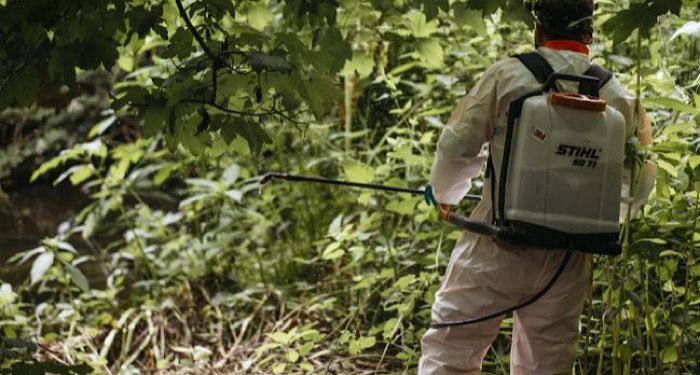
The cost for a small area, whether domestic or industrial of 50m² or less would cost about £90 to £250, with the labour price reaching £180 to £450 for a 50-100m² area, or £270 to £700 for a 100-500m², and the price is £360 to £900 for a 500-1000m² space.
Those based in the London area can expect higher labour costs than those based in other areas of the UK.
If you live in the southeast (London especially), you can expect to pay higher Japanese knotweed removal prices than if you were based in the North of England, Scotland, or Northern Ireland.
This is due to the varying costs of living throughout the UK, leading tradespeople to set rates appropriate to their region.
How Long Does It Take to Remove Japanese Knotweed?
We'll now consider the durations involved in removing Japanese knotweed. We'll look at how long it generally takes based on the size of the area and considering what factors can impact the duration.
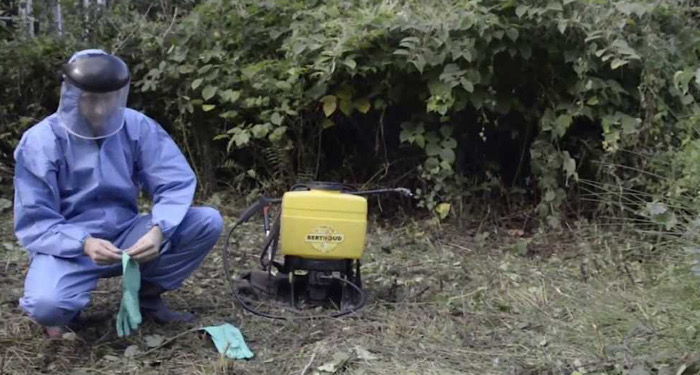
For an area of 50m² or less, it would take about half a day. In the case of an area that is 50-100m², expect it to last a day. For a 100-500m² area, expect it to take about a day and a half, but for a 500-1000m² space, it will take two days or more.
The time-affecting factors include the number of tradespeople, ease of access, the type of treatment used, and the size/type of the treatment area.
How Can I Tell If I Have a Japanese Knotweed Problem?
Identifying Japanese Knotweed early is essential to prevent it from spreading and causing significant damage to your property. This highly invasive plant has a distinct growth cycle and visual characteristics that change throughout the year. Here are the key signs to watch out for:
- Spring (March–May): Look for red or purplish shoots emerging from the ground. These resemble thick asparagus tips and can grow rapidly in just a few days.
- Early Summer: The plant develops thick, hollow stems similar in appearance to bamboo, with purple speckles and clearly defined joints. These stems can grow up to 3 metres tall.
- Leaves: Japanese Knotweed leaves are bright green, broad, and shaped like a shovel or heart. They typically grow up to 15 cm long and are arranged in a zig-zag pattern along the stem.
- Late Summer (August–September): Small, creamy-white flowers appear in clusters. These usually grow near the top of the plant and are a strong indicator of full maturity.
- Autumn: As the season progresses, the leaves begin to yellow and fall, but the plant structure remains upright and rigid.
- Winter: Above-ground growth dies back, leaving behind brown, brittle canes. Although the plant may look dead, the underground rhizomes remain active and can regrow in spring.
If you notice one or more of these signs on your property, it's important to act quickly. Japanese Knotweed spreads aggressively and can cause serious structural issues if left untreated. For detailed identification tips and images, visit the Royal Horticultural Society (RHS) website.
Types of Japanese Knotweed Treatments
There are several methods available for treating Japanese Knotweed, each with its own benefits, limitations, and costs. In this section, we’ll explore the most common approaches, helping you weigh the pros and cons of each treatment option.
Herbicide Treatments
This approach involves the use of herbicide, a substance that is toxic to plants and may be used to remove Japanese knotweed. It is also one of the cheapest options available when it comes to removing Japanese knotweed.
However, the downside to herbicides is that it is not an environmentally friendly option, and they can be harmful to human/animal health.
Pros:
- Generally effective over multiple applications
- Cheapest option
- Minimal disruption to the landscape
Cons:
- Not eco-friendly
- Requires repeated treatments over several years
- Potential health risks to humans and animals
Excavation Treatment
The process of excavating involves simply removing all viable plant material. It is essentially an attempt to completely uproot the knotweed and ensure that it can't grow back. After all, if the herbicide is only used on the surface, there is no guarantee that it will work.
Excavation is a more expensive, disruptive, and time-consuming approach, however. In many cases, seven metres of excavation horizontally in every direction from the infestation perimeter may be needed as well as excavation to a depth of about three metres.
Pros:
- Virtually certain to work if done right
- Provides immediate results
- Often the preferred method for construction areas
Cons:
- More expensive than using a herbicide
- Highly disruptive to the site, requiring heavy machinery
- Can generate large volumes of controlled waste
Sifting & Screening
Sifting and screening is a method used to separate Japanese Knotweed rhizomes and other plant material from infested soil. This process involves excavating the contaminated soil and then mechanically processing it through a screening unit.
The machine filters the soil, isolating any rhizome fragments, roots, and other organic material for removal. The cleaned soil can then be reused on-site, helping to reduce the cost of landfill disposal.
While it is a thorough and generally effective method, sifting and screening require specialist equipment and expertise, making it a relatively expensive and time-consuming option.
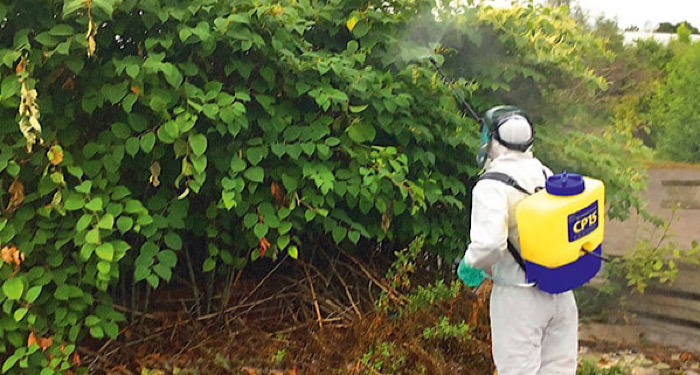
Pros:
- Usually very effective
- Can reduce volume of soil needing off-site disposal
- Useful for large-scale or commercial sites
Cons:
- Costly option
- Time-consuming, especially for heavily infested areas
FAQs
Q: What does Japanese Knotweed look like?
A: For Japanese knotweed identification, it consists of creamy-white tassels that reach up to six inches in height, tall canes with a resemblance to bamboo, and leaves with a shovel or heart shape.
It's important to distinguish it from plants that look like Japanese knotweed, such as lesser knotweed, ornamental bistorts, and bindweed.
Q: Which is the best treatment for Japanese knotweed removal?
A: Herbicide is the best option in most cases, but it depends on your preferences. Excavation can be more eco-friendly and all but guaranteed to permanently remove the source of the issue, while using a herbicide may not.
Q: What are the consequences of not removing Japanese knotweed?
A: For one, it can lead to structural problems with buildings, and it may cause issues with getting a mortgage.
Beyond that, if you knowingly let contaminated plant material or soil spread into local wildlife, you could face a fine of as much as £5000 or face up to two years in prison.
Q: Can I remove Japanese knotweed DIY?
A: You should hire a specialist to deal with the removal of Japanese knotweed. If not, you should at least seek professionals' advice and only undertake this work, so long as you have obtained the necessary planning permission/building regulations approvals.
It's also vital that you are confident you know exactly what is involved. If you have any doubts or/and would like to know more about any official approvals needed, please contact your local council.
Q: Is Japanese knotweed dangerous to touch?
A: It is not harmful to touch for people, but the risk is that you could cause it to spread more simply by tugging at it.

